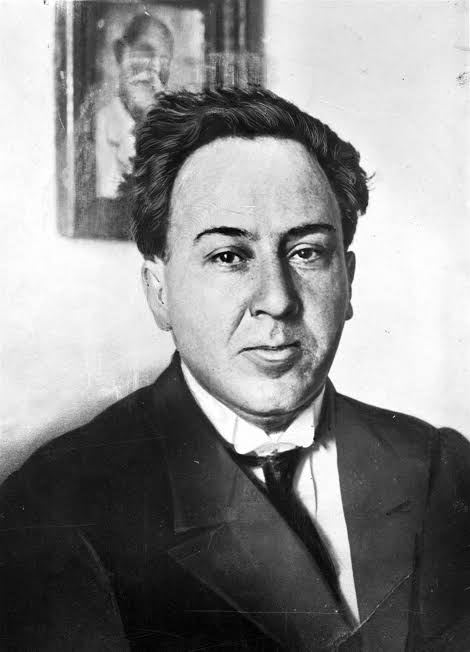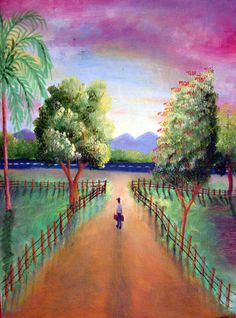<< Hide Menu
5.2 “He andado muchos caminos” – Antonio Machado
7 min read•june 18, 2024
Alejandra Ramos
Alejandra Ramos
The well-known poem "He andado muchos caminos" was written by Antonio Machado, a famous Spanish poet of the late 19th and early 20th century who is renowned for his reflective and philosophical writing.
Context of "He andado muchos caminos"
Author Background
Spanish poet Antonio Machado (1875–1939) was part of the Generation of '98 literary movement. Through this movement, he was able to produce a critical study of Spain's cultural and political identity. With a melancholy and introspective tone, Machado's poetry frequently reflected his concerns about human nature and society. Machado endured intense emotional and political hardship throughout his life, including the death of his young wife and the devastation caused by the Spanish Civil War. All of his history can be seen as factors in his writing.

Image Courtesy of Historia National Geographic
Time and Place
📜 Historical: Spanish society and politics underwent a substantial transformation in 1912. "He andado muchos caminos" was published during this time so it is an accumulation of many of the feelings and events that were leading up to this point. This time period was especially characterized by growing hostilities between conservatives and liberals. Machado's personal journey, as well as bigger societal changes during this time of transition, are both reflected in the poem.
**🗺️ Geographic:**The setting of "He andado Muchos Caminos" is Spain. Spain was, and is, a nation that is very well-known for its rich cultural legacy and diverse landscapes. The voyage across numerous landscapes that the reader takes after reading Machado's poem metaphorically represents the poet's examination of various life pathways. The poem's images and words convey Spain's stunning natural scenery and diverse geography.
Societal Context
👑 Political: Spain was going through political instability at the time the poem was published. These resulted in several political ideologies gaining popularity and growing tensions between people. Political polarization and social changes were brought about by the Second Spanish Republic, which also saw conflicts between the monarchy and Republican movements. The poem by Machado can be read as a reflection on the decisions people must make in a society that is politically divided and on the struggle to find one's own identity in the face of opposing viewpoints.
🧑🏽🤝🧑🏻 Socioeconomic: "He andado muchos caminos" is set in a socioeconomic environment that reflects difficulties for a lot of people. There were both social and economic differences that people had and issues that frequently revolved around these two categories. Economic disparity was not the only issue; there was also a rural-urban split and social structures were shifting. The difficulties faced by people from various socioeconomic origins and their search for meaning and purpose in life are depicted in Machado's poetry.
🎭 Cultural: Within the setting of his time, Antonio Machado was greatly impacted by modernism and more specifically, symbolism. "He andado muchos caminos" represents the literary fads of the early 20th century, which were distinguished by language, form, and symbolism innovation. The poem incorporates Spanish cultural aspects and traditions while exploring universal topics of human existence and identity.
Need to Know About "He andado muchos caminos"

Image Courtesy of Pinterest
Characters
The Poet: The poem's main character and narrator represents Antonio Machado. He sets out on a metaphorical voyage down many routes, exploring various options and life experiences. The poet is a truth-seeker and a dreamer who examines his own existence and wonders about the purpose of his trip. Machado conveys his own introspection and the universal search for self-discovery through the poem.
Literary Terms and Devices
Some literary terms you should be familiar with for this text are:
-
- Hipérbole (Hyperbole): In "He andado muchos caminos," the poet uses hyperbole to magnify his experiences and feelings. He emphasizes the scope and complexity of his life's journey, by overstating the number of pathways he has traveled. The use of hyperbolic language increases the poem's effect and inspires amazement and astonishment in the reader.
-
- Alusión (Allusion): The poem gains depth and levels of significance because of these allusions. By referencing well-known cultural references and other components, these allusions help the reader better grasp the subjects the poem explores. Additionally, they provide links between the poet's own experiences and larger literary and cultural traditions, giving the poem's overall meaning more depth and resonance.
-
- Imagen (Imagery): This poem is full of rich and vivid imagery that Machado used to establish stronger connections with his audience. The following are just some examples of this imagery:- - "he abierto muchas veredas" (I have opened many paths) employs figurative language to express the act of discovering and forging new paths in life. It gives the impression that the poet is facing numerous routes that are branching and opening up.- - "borrachos de sombra negra" (literally, "drunkards of black shadow") draws up a strong mental picture of people who are attracted by the darkness and sorrow, symbolizing their emotional state.- - The phrase "descansan bajo la tierra" (rest beneath the earth) refers to a person's final resting place and paints a gloomy picture of mortality and the circle of life.
-
- Simbolo (Symbol): The poetry "He andado muchos caminos" is heavily influenced by symbolism. It employs a variety of symbols to communicate deeper meanings. For instance, the "caminos" or routes represent various options, journeys, and courses in life. They represent both the poet's own journey and the larger human search for meaning and satisfaction. The way he describes nature also helps represent the passing of time and the fleeting beauty of existence.
-
- Metáfora (Metaphor): Metaphors are used frequently in the poem to express deeper meanings and make striking analogies. For instance, the courses are symbolically compared to different paths of nature. This helps emphasize the aspect of life's choices. The poetry is made stronger and more impactful by the use of metaphors, which makes reading it more imaginative and engaging.
Summary of "He andado muchos caminos"
Antonio Machado's poem "He andado muchos caminos" is a reflection on the poet's life's journey. The narrator talks of having traveled many pathways, making countless tracks, and experiencing various new things. The poem contrasts scenes of joy, dance, fun, and labor with scenes of grief and shadows. The poem helps differentiate between different people including those that are consumed with focusing on what is wrong and what is negative and those that are more focused on the moment. The poem also helps remind the audience that there is still the same destiny for most people and the connection of ending up "beneath the earth."
Additionally, the poem includes times of feelings on opposite ends, both happy and negative times.
People who dance or play when they can and work their land are shown in the lines "gentes que danzan o juegan, cuando pueden, y laboran sus cuatro palmos de tierra" (people who dance or play when they can and work their four small plots of land). These people find satisfaction and fulfillment in simple pleasures, hard work, and a connection to the earth. These people are happy with their simple lifestyles and focus on the here and now, enjoying the trip rather than worrying and constantly being anxious about what they can't change.
"Caravanas de tristeza" (sad caravans) and "borrachos de sombra negra" (black shadow drunkards) are terms used in the poem to describe people who are overcome by negativity, sadness, and darkness. These pictures portray a sense of helplessness and despair that exists in some parts of society.
Themes in "He andado muchos caminos"
Las relaciones interpersonales (Interpersonal Relationships)
Through the presentation of opposing individuals and their interactions, the poem examines the complexity of interpersonal relationships. It portrays both those who are more happy and live peacefully, as well as others who spread grief and negativity. This emphasizes the variety of dynamics and effects that connections can have on people and the larger society. The poem expresses an understanding of interpersonal connections by showing different groups of people.
El individuo y la comunidad (The Individual and the Community)
The poem examines the conflict between personal freedom and social standards. It shows people who value their own happiness, follow their own paths, and find joy in simplicity. This emphasizes the value of personal choice and pursuing one's goals within a specific society. The poem makes the argument that real community occurs when there is a common harmony and overall acceptance of what is to come. The other side can also be seen in which people are more anxious and may not live as freely as those who are less worried or more happy.
La amistad y la hostilidad (Friendship and Hostility)
Through the presentation of different personalities and their actions, the poem examines the conflict between different personalities and characters. The poem shows both people who spread hatred and negativity as well as those who enjoy themselves and tend to stay positive. This emphasizes the significance of both beneficial and detrimental factors in interpersonal relationships. The poem makes a suggestion on the transformative potential of friendship by depicting joyful activities, dancing, and playfulness. In contrast to the unfavorable characteristics displayed by antagonistic characters, it emphasizes the value of sincere relationships and the capacity to find comfort and satisfaction.
Significance of "He andado muchos caminos"
In "He andado muchos caminos," Antonio Machado explores the nature of human relationships. This emphasizes the importance of acceptance, understanding, and shared experiences. The poem presents various characters with contrasting behaviors, allowing readers to reflect on their own interactions with others. It reminds us that true connections are built on a variety of factors, including our positivity or negativity.
The poem also raises the question of balancing personal freedom with community expectations. Machado suggests that individuals can find fulfillment by following their own paths and dreams while still being part of a larger community. "He andado muchos caminos" also emphasizes the power of genuine friendships and the negative effects of hostility. Through vivid descriptions, the poem allows us to reflect on the impact our relationships have on our well-being and personal growth. It encourages us to foster connections that bring joy and support while also being mindful of negative influences.
The poem serves as a reminder of the value of creating enduring relationships and making a positive impact on communities. It encourages us to consider our own actions, decisions, and the effects we have on others.

© 2025 Fiveable Inc. All rights reserved.